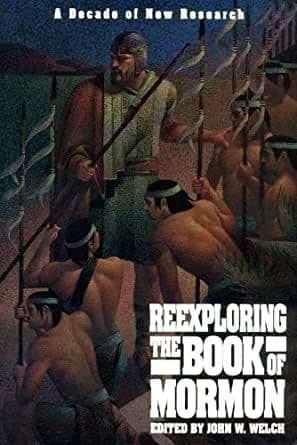Book
85 Chapters

Alma 5:40 “Whatsoever is good cometh from God, and whatsoever is evil cometh from the devil.”
The writers of ancient scripture often contrasted one idea in one line or stanza with an opposite or antithetical idea in a parallel line or stanza. Proverbs 13:9 records an example of antithetical parallelism:
The light of the righteous rejoiceth:
but the lamp of the wicked shall be put out.
Notice that the contrasted elements (righteous/wicked) are not simple contradictions but opposite aspects of the same idea. The Book of Mormon contains many fine examples of antithetical parallelisms. Alma, in his great discourse to the saints of Zarahemla, utilized this poetic form. His words are brief yet conclusive:
Whatsoever is good
cometh from God,
and whatsoever is evil
cometh from the devil.
(Alma 5:40)
Note the italicized antonyms. Two words epitomize the perfect contrast, “good” and “evil,” and two beings are also considered opposite extremes. Alma’s method of contrast establishes this opposition in the plainest of terms.
A second example of extended antithetical parallelism is found in Alma 9:28:
If they have been righteous
they shall reap the salvation of their souls,
according to the power and deliverance
of Jesus Christ;
and if they have been evil
they shall reap the damnation of their souls,
according to the power and captivation
of the devil.
In the first strophe the words “righteous,” “salvation,” “deliverance,” and “Jesus Christ” stand in direct contrast to the terms of the second strophe—”evil,” “damnation,” “captivation,” and “devil.” Both strophes begin with an “if” statement, immediately followed by the results that come from righteousness or evil. The sides are clearly drawn between good and evil.
Antithetical parallelism not only contrasts two ideas, but also connects them. The meaning of the contrasted items separates them clearly, but the parallelistic format joins them so that the reader must consider them together. One purpose of this poetic form is thus to allow, or even force, the reader to make a mental comparison, and often a choice, between two diametrically opposed but related ideas. Whether consciously or intuitively, the reader sees in antithetical parallelism a unique reciprocity, as well as a strong contrast between the two elements.
Another Book of Mormon verse illustrates the principle again, where Alma speaks to his son Helaman:
Yea, I say unto you, my son,
that there could be nothing so exquisite
and so bitter as were my pains.
Yea, and again I say unto you, my son,
that on the other hand,
there can be nothing so exquisite
and sweet as was my joy.
(Alma 36:21)
In this verse Alma obviously intends by phrasing the issue in this bold way to push his son to side mentally with and feel an affinity with righteousness rather than with evil. In such a teaching situation, antithetical parallelism has the ability to produce an emotional response in the original audience and also in subsequent readers that leads them to follow the teachings.
Comparison between two terms has always been an accepted tool of rhetoricians to invoke the reader’s involvement. As Aristotle wrote, “This kind of style is pleasing, because contraries are easily understood and even more so when placed side by side, and also because antithesis resembles a syllogism; for refutation is a bringing together of contraries.”1
Recognizing this antithetical parallel structure can help us see more clearly the issues that writers of the Book of Mormon wanted us to focus on. Appreciating the connections and contrasts between the ideas that they felt were most important may lead us to feel as they felt and act as they admonish us to act.
Based on research by Donald W. Parry, September 1990. Further work on this topic was presented by Parry at the Book of Mormon Symposium at Brigham Young University, February 1991, in a paper titled “Teaching in Black and White: Antithetic Structure in the Book of Alma—Its Form and Function.”
1. Aristotle, The Art of Rhetoric, trans. J. H. Freese (London: Heinemann, 1967), III, 9, 7-10.
Book
85 Chapters
Items in the BMC Archive are made publicly available for non-commercial, private use. Inclusion within the BMC Archive does not imply endorsement. Items do not represent the official views of The Church of Jesus Christ of Latter-day Saints or of Book of Mormon Central.